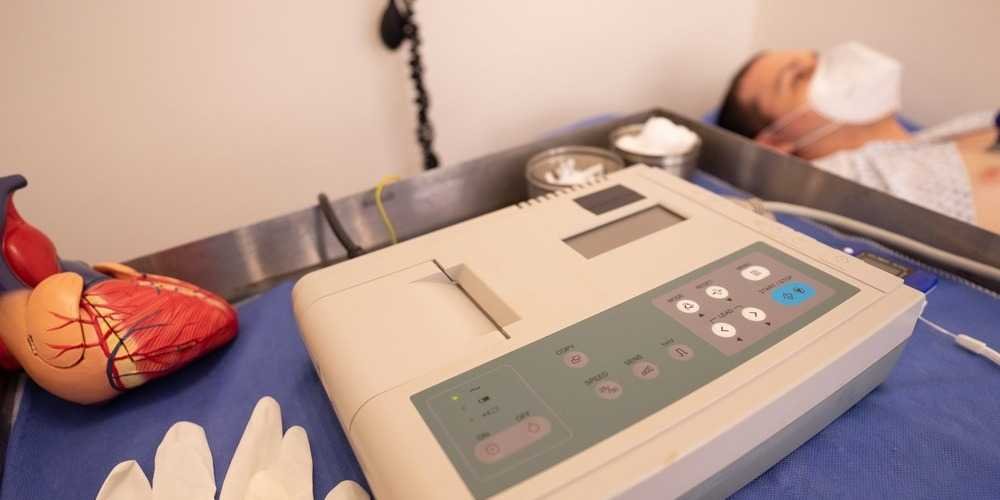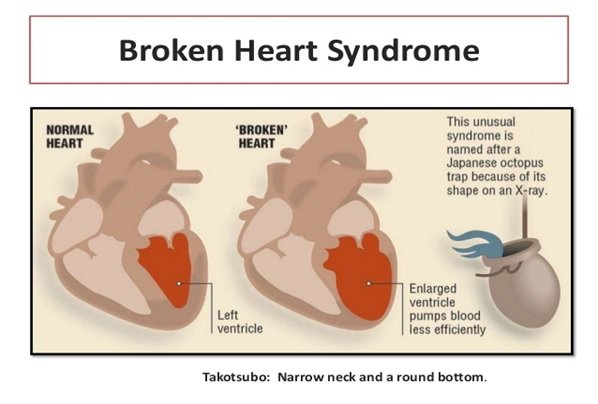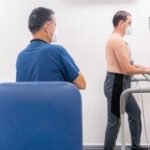
The Heart Becomes Like a Takotsubo! Causes, Symptoms, Diagnosis, and Treatment of Broken Heart Syndrome
Think about it, are there any events in your life that left a deep mark in your memory? Maybe there are painful things like breaking up with a boyfriend or girlfriend, the death of a family member, the end of a precious friendship; or there may be unexpected things like winning a lottery or an unexpected surprise party.
What you may not know is that these things not only affect your mood, but may even cause damage to your heart. This article will introduce to you what Takotsubo cardiomyopathy (also known as broken heart syndrome) is all about.
What is Broken Heart Syndrome?
Other names for broken heart syndrome include stress cardiomyopathy and apical ballooning syndrome.
Don’t be frightened by the name. Heartbreak does not mean that the heart is actually “broken” piece by piece, but that people who experience this kind of heart disease symptom often experience heartbreaking things that cause extreme emotions and Changes in pressure can cause heart disease.
In addition to being triggered by emotional stress (approximately 36%), broken heart syndrome may also be triggered by physical stress (approximately 28%), such as acute respiratory injury, surgery, fractures, and neurological injuries. caused by accidents or other physical illnesses. About 8% are triggered by both psychological and physiological factors, and 28% are caused by unknown causes.
Broken Heart Syndrome is particularly common in women (about 90%), and it mainly occurs in mid-menopausal and post-menopausal years. Most patients are often triggered by emotions and psychology; however, male patients are mainly triggered by physical and physiological triggers.

Causes and classification of broken heart syndrome
Typical takotsubo cardiomyopathy was first published in 1990 by Japanese scholars such as Sato. The patient’s left ventricle will deform. At this time, the pumping capacity of the left ventricle decreases and the ejection fraction decreases. The shape of the left ventricle looks like the shape of the left ventricle used by Japanese fishermen to catch octopus under left ventriculography. “Takotsubo Trap”. Generally can be divided into the following 4 types:
Apex
Apical type is typical of Takotsubo cardiomyopathy. The apex and lower half of the patient’s left ventricle become arc-shaped due to insufficient or no contraction, while the upper half of the basal myocardium exhibits an inward shape similar to the neck of a pot due to excessive contraction of the basal myocardium. Accounts for approximately 82% of cases of takotsubo cardiomyopathy.
Middle type
Mid type refers to hypocontractility or no contraction in the middle segment of the left ventricle, combined with normal or excessive contraction of the basal and apical segments. Accounts for approximately 15% of cases of Takotsubo cardiomyopathy.
Basal type
The basal type is the opposite of the apical type, also known as the reverse type, that is, the basal segment has insufficient or no contraction, while the apical segment contracts excessively. It accounts for approximately 2.2% of cases of Takotsubo cardiomyopathy.
Focal type
Focal type refers to local hypocontractility or lack of contraction in any segment of the left ventricle, and generally the anterior and lateral wall segments are more affected. Accounts for approximately 1.5% of cases of Takotsubo cardiomyopathy
The cause of Takotsubo cardiomyopathy is still under study. Currently, most scholars believe that heartbreak syndrome comes from catecholamines (including epinephrine, norepinephrine, and dopamine) in the patient’s body.
After a patient experiences a stressful event, a large amount of catecholamines are suddenly produced in the body, causing the heart to be unable to bear the rapidly increasing pressure and causing the disease.
In addition to severe emotional changes that may lead to broken heart syndrome, physiological factors such as asthma (Asthma), fractures, and surgeries may also cause symptoms. In addition, in rare cases, certain medications may cause a sudden increase in stress hormones and cause broken heart syndrome, including:
- Epinephrine
- Depression medications (eg: Duloxetine, Venlafaxine)
- Levothyroxine
- Illegal stimulant drugs (e.g. amphetamines, cocaine)
Broken heart syndrome symptoms
Almost all symptoms that occur in patients with acute coronary syndrome (ACS) can occur in patients with broken heart syndrome. Chest pain, dyspnea and syncope are all similar, so it is not surprising that heartbreak syndrome is treated as acute coronary heart disease and is hospitalized for examination and treatment.
When patients were hospitalized for examination due to symptoms of acute coronary heart disease, although they all had typical electrocardiographic changes caused by myocardial hypoxia and an increase in myocardial Troponin, about 2% of them were found to have heartbreak. Syndrome attack, not myocardial infarction.
Because no coronary artery obstruction or acute plaque rupture was found in the cardiac catheterization examination of this group of patients with broken heart syndrome, and later left ventricular photography also confirmed the typical shape of Takotsubo cardiomyopathy. The following are possible symptoms of broken heart syndrome:
- Chest pain (70~75% of patients have this symptom)
- Feeling of pressure and tightness in the chest
- Difficulty breathing and shortness of breath (20~50% of patients have this symptom)
- Arm and shoulder pain
- Syncope (8% of patients experience this symptom)
- Feel sick and vomit
- Palpitation

When should you seek medical attention?
If you find that your mood changes drastically after experiencing something and your body develops the above symptoms, please seek medical attention immediately.
Complications of broken heart syndrome
Most patients with broken heart syndrome will not develop fatal complications, with only a few cases of cardiac arrest, and the recurrence rate within five years is about 10 to 15%.
- Pulmonary edema
- Heart failure
- Hypotension
- Arrhythmia
- Cardiogenic shock: occurs in 9.9% of patients while hospitalized
- Cardiac arrest
- Thrombus
- Death: 4.1%.
What increases the risk of broken heart syndrome?
Studies have shown that the vast majority of patients with broken heart syndrome are women, especially postmenopausal women. Other risk factors include:
- Smokes
- Alcoholism
- Hyperlipidemia
- Neurological disorders (epilepsy, head trauma)
- Mental illness (anxiety disorder, depression)
How to diagnose broken heart syndrome
Since the symptoms of Takotsubo cardiomyopathy are similar to those of myocardial infarction, cardiac catheterization or coronary angiography is usually performed first to determine whether the patient’s blood vessels are blocked and to determine whether the patient has broken heart syndrome. . Of course, the following diagnostic methods can also help identify the disease:
1.Electrocardiogram
Patients typically present with ST-segment elevation (44%) or ST-segment depression (8%) or QTc segment lengthening (48%), similar to acute myocardial infarction. (Recommended reading: How to read an electrocardiogram? Introduction to wave pattern interpretation and examination procedures)
2.Cardiac ultrasound
Echocardiography is used to observe whether there are abnormalities in the shape of the patient’s heart during contraction, and the ejection fraction (EF) can be calculated. Usually the ejection fraction of heartbreak syndrome is worse than myocardial infarction; the average on the day of hospitalization is about EF= 39%.
Cardiac ultrasound also makes it easy to track the recovery rate of heart function with respect to ejection fraction. Recovery usually begins on the 2nd or 3rd day of hospitalization, and is nearly complete recovery (EF=65%) in about one and a half to 2 months.

3.Cardiac catheterization
It is usually a necessary examination. On the one hand, it can confirm that the coronary arteries of patients with broken heart syndrome are normal or have a stenosis of less than 50%. On the other hand, the shape of the ventricles of patients with broken heart syndrome can also be observed.
4.Cardiac MRI
For broken heart syndrome, cardiac magnetic resonance imaging (Cardiac MRI) is both an auxiliary and a useful tool for diagnosis. Late gadolinium enhancement (LGE) is common and obvious in the diagnosis of patients with myocardial infarction, but it is rare in patients with broken heart syndrome. This helps in the differential diagnosis of the two.
5.Nuclear medicine examination
Commonly used examinations are myocardial perfusion imaging (MPI), injecting nuclear medicine examination preparations with radioactive isotopes (such as Thallium-201 (Thallium-201), iodine or F-FDG), and observing the patient’s cardiac angiography, such as injecting thallium -201 A slight reduction in thallium absorption can be seen in Myocardial thallium scintigraphy.
6.Myocardial biochemical markers
Cardiac biomarker: Troponin (also known as troponin) in the patient’s heart enzyme will increase (87%), which is similar to myocardial infarction, but the peak value of troponin in myocardial infarction is higher than that in heart attack Syndrome is high.
If troponin T (Troponin T) is greater than 6ng/mL and troponin I (Troponin I) is greater than 15ng/mL, broken heart syndrome is unlikely. Of course, coronary artery obstruction must be considered at this time.
Treatment for Broken Heart Syndrome
Generally, there is no specific treatment for broken heart syndrome. Supportive therapy is usually used to assist the patient to recover on his own, and the required drugs are chosen depending on whether the patient has other complications.
If the patient receives appropriate medical treatment, the prognosis for heartbreak syndrome is mostly good. The patient’s left ventricular function gradually recovers within a few days, and complete recovery takes 3 to 4 weeks. The following medications may be used:
- Angiotensin-Converting Enzyme inhibitors (ACE)
- Angiotensin II receptor blockers
- Beta-blocker (β-Blocker)
- Diuretics: used to treat patients with edema.
- Anticoagulant drugs: used to treat people who develop blood clots.
How to prevent broken heart syndrome
Whether you are suffering from the disease or have never had it before, in addition to keeping your mood stable, you can also adopt the following methods to protect your heart:
- Healthy diet (low cholesterol)
- Quit smoking
- Exercise more
- Drink less
- Relieve stress
These methods may be cliché, but they are also important keys to preventing other cardiovascular diseases. Studies have also shown that patients with broken heart syndrome caused by temporary emotional stress have a better prognosis than those with broken heart syndrome caused by illness, neurological disorders, or physical stress.













